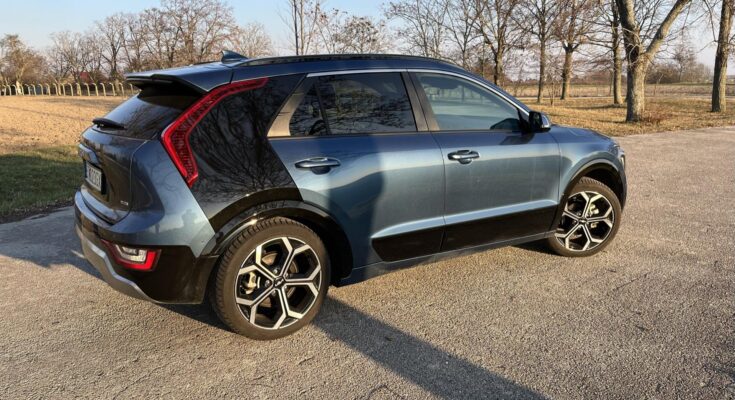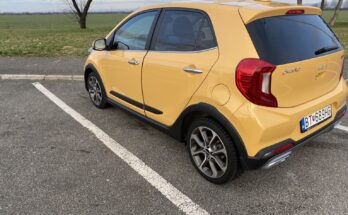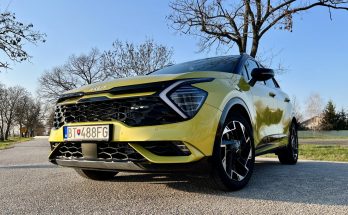The new Niro was an important news for KIA last year. Alongside a completely redesigned look, it now boasts craftsmanship and technology never dreamed of before…
The first-generation Niro was revealed to the world in 2016, when the automaker made a pretty bold move. It fully ventured into the world of electrification, to an unprecedented degree. The Niro first arrived as a hybrid followed by a plug-in hybrid and finally a pure electric version. Back then, KIA built the Niro on a completely new platform, so it took a tried-and-tested recipe and opted for a compact body somewhere between a hatchback and an SUV – it’s called a compact crossover, supposedly.
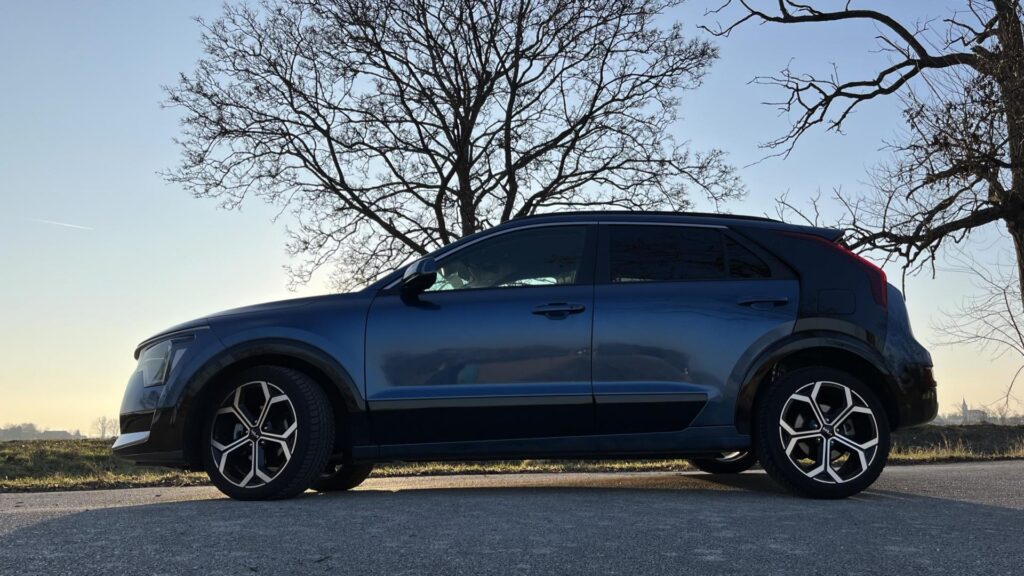
Although it was more of a fringe model in our market in sales figures, the Niro celebrated quite a success in Europe. After all, in previous years it was the best-selling vehicle in the entire model range of this Korean carmaker. The second Niro basically follows the former formula, but to at least match the success of its predecessor, it also draws a few attractive trumps.
So KIA has come up with the second generation in an all-new design and with advanced technologies. The new car has grown in every way between the generations, with the most significant increase in value seen in length (+65 mm) and width (+35 mm). The 2720 mm wheelbase has improved by a respectable 20 mm. Compared to its predecessor, the car is more spatially balanced, lower and considerably more optically staggered.
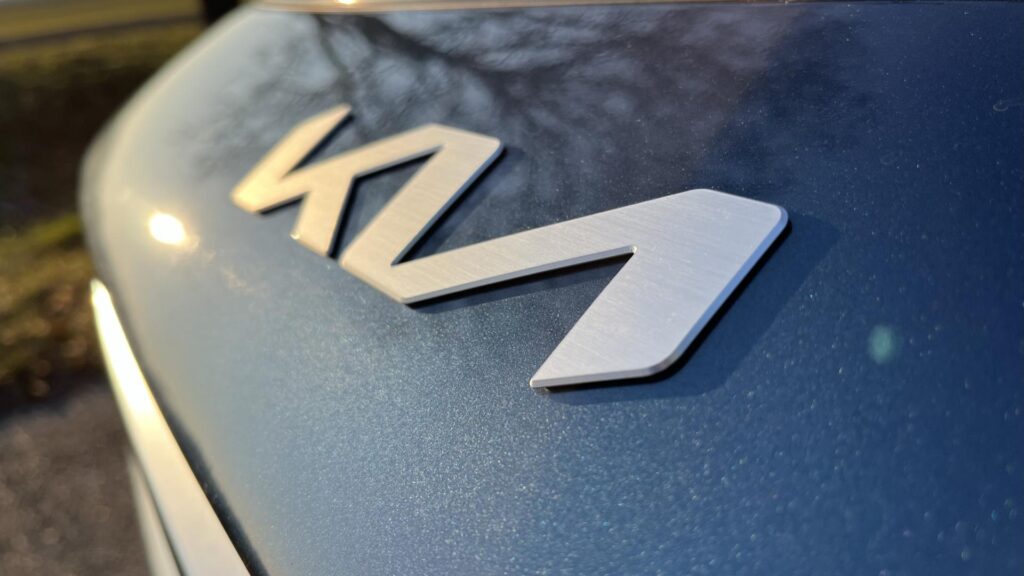
Although the new Niro is designed along the same lines as its sister Sporatge, the designers have dressed it up in a distinctive coat so you won’t mistake it for anything on the road. Whether you like it or not, I’ll leave up to you. Personally, I appreciate KIA going to such extravagance. Actually, why not! The interesting design makes their models more powerful and confident. The numerous curves are not just for show though, as they are behind the favourable 0.29 air drag coefficient.
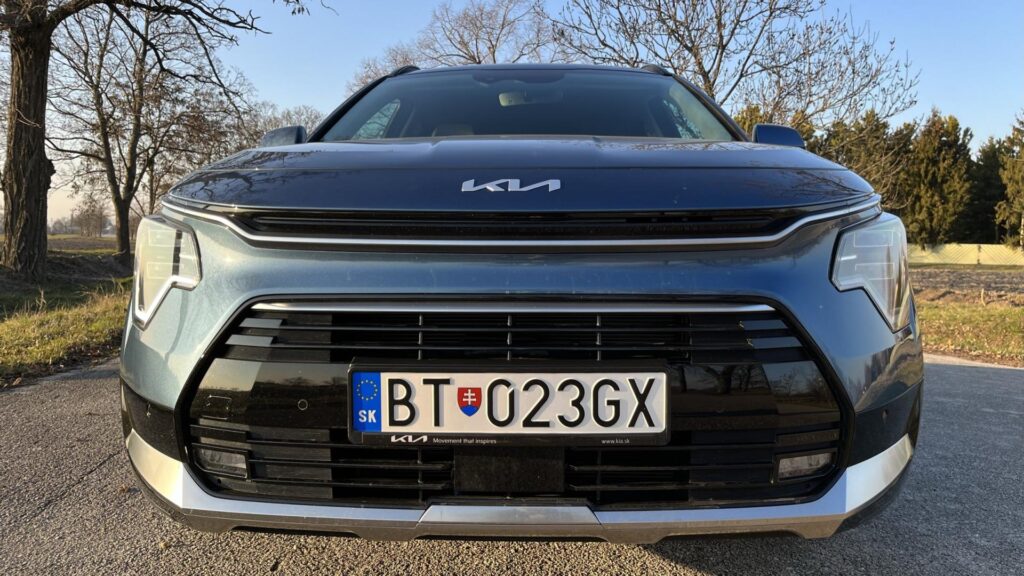
Horizontally stacked elements play a role in the front end. Note the narrow stripe, replacing the traditional radiator grille, with decorative moldings. The headlamps are quite large and atypically shaped, similar to the daylight shaping itself. The headlamps in the highest, tested Platinum trim feature Full LED technology, with automatic high beam switching. However, don’t expect a matrix function from them. From the second Gold trim level onwards, front fog lights are also included.
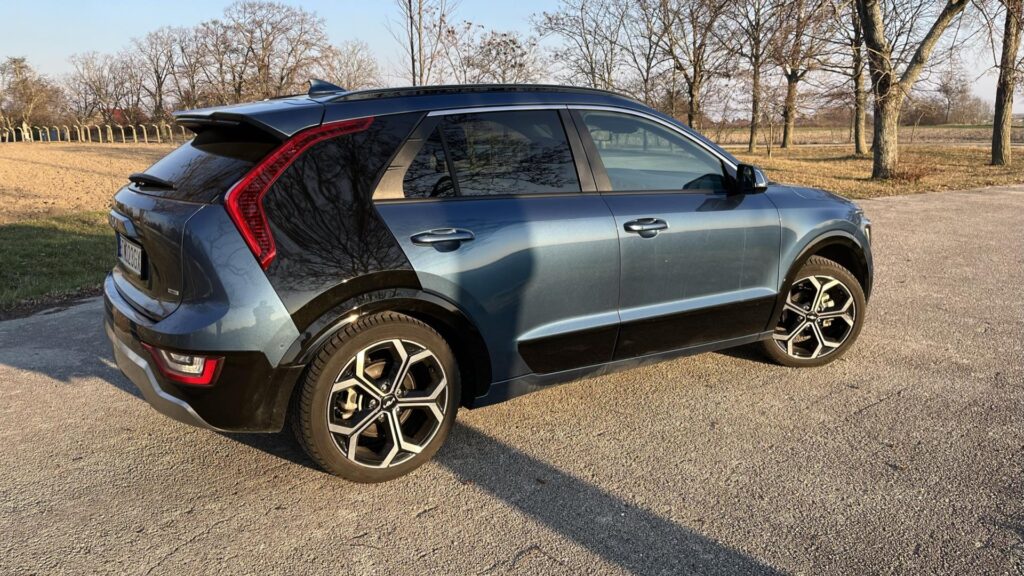
It’s not just the front end that’s more extravagant than before, though. The side silhouette bets on simplicity, at least from the front to the C-pillar. The latter can be made in a contrasting colour for an extra cost, but mainly it hides the vents that help the Niro to aforementioned better aerodynamics. The car can wear wheels from sixteen to eighteen inches, and our test piece had the largest possible footprint, with 225/45 R18 tyres.

At the back, the Niro is already quite a bit more restrained in design. But at least the taillight shapes are noteworthy, as is the diffuser colour scheme. The boot lid opens electronically in top trim, and the hybrid version we tested may be the only one available with a classic range-topping powertrain (thanks to the smallest battery pack) But here, under the double bottom, we find the subwoofer of a great Harman&Kardon audio system. Only the nonsensical trend of turn signals located down in the bumper I still can’t understand. Meanwhile, there would be room for them much higher up, so you wouldn’t overlook them so easily.
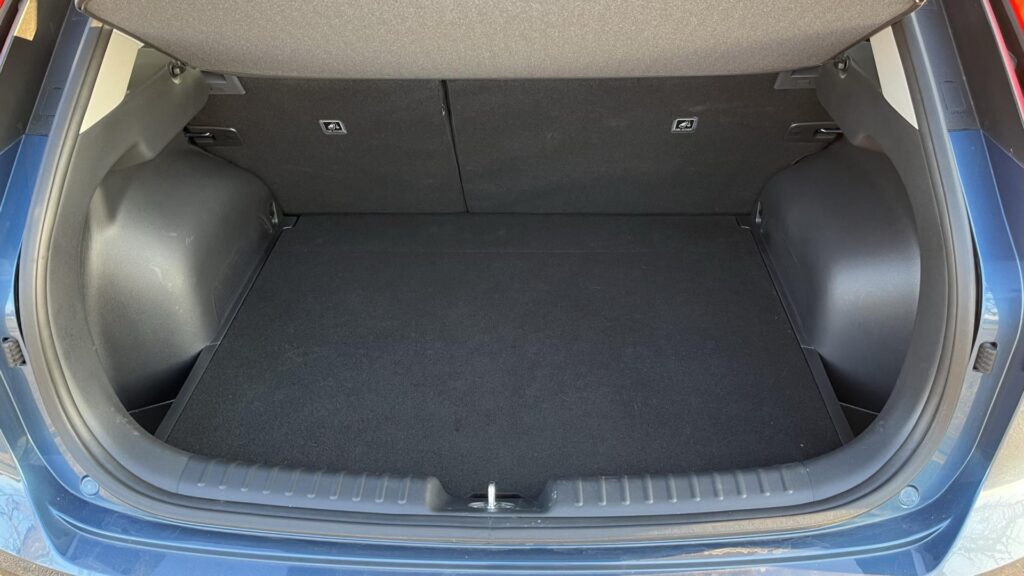
The interior of the new Niro has been completely redesigned to match the current architecture of the brand’s other models. A high degree of digitisation is presented here by a pair of 10.25-inch screens. The dashboard has three classic schemes with alarms, the fourth is in the spirit of minimalism, and the landscape in the background changes depending on the time of day or the weather. Some might find the range of driving data displays austere, others on the other hand will appreciate the simplicity and hence the user-friendliness.

The classic KIA infotainment in this model could be faster overall. It’s not slow, but it does get strangely stuttery at times and not very smooth. The system has built-in navigation, but the ability to connect via Apple CarPlay and Android Auto comes in handy – too bad it’s cable-only.

The bottom touch bar is a matter of two faces. It’s commendable that KIA kept the shortcuts to the basic elements, but it’s not a very happy solution. The control bar does look fancy, but it’s quite low and quite far away, so you can’t avoid leaning over and ducking your gaze away from the natural field of view. Also unintuitive is the wheel control on the far left. Basically, you use it to control the radio volume, but it’s only when you click next to the air-conditioning icon that you adjust the air temperature. This makes it a two-step operation and is simply distracting while driving. If you can live with that, though, in everything else the Niro’s interior practicality is great.
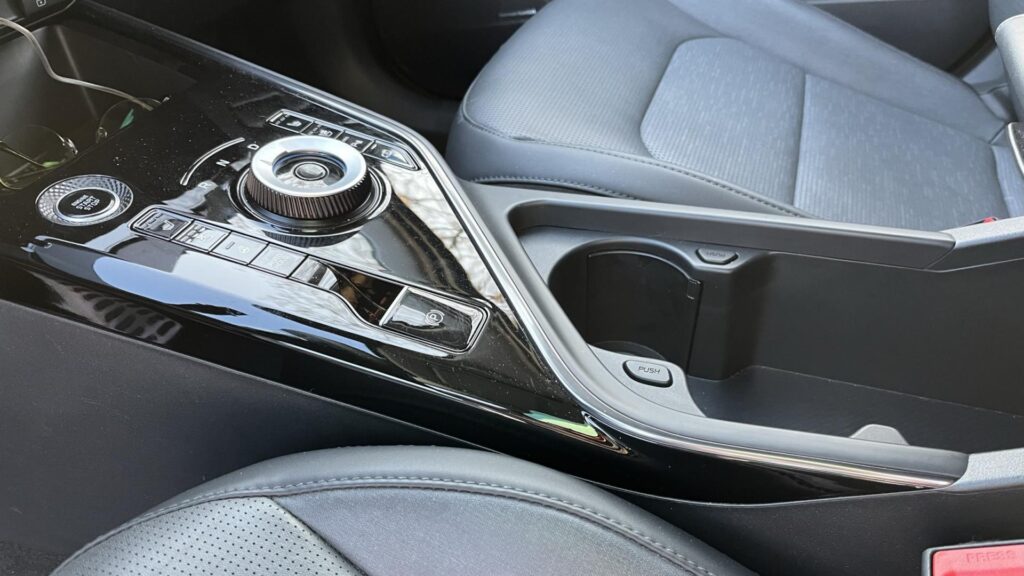
The crew area is doing just as well. The Kia Niro has never been at a loss in this regard, with the previous generation also wringing the maximum out of the available floor plan. So does the newcomer, which benefits from a more stretched-out footprint. In the front, with a height of 186cm, I find the ideal position behind the wheel playfully, then in the second row I still have a large margin above my head and especially in front of my knees. What’s more, the rear seats are also quite comfortable and in this trim also heated. Last but not least, the solid entry space with doors that open practically at right angles should also be highlighted.

Along with the new design came a completely redesigned steering wheel. Design-wise, the steering wheel may look awkward to some, but ergonomically there’s nothing to fault it and it even has a button with an optional function such as changing the navigation route or switching to silent mode or CarPlay.
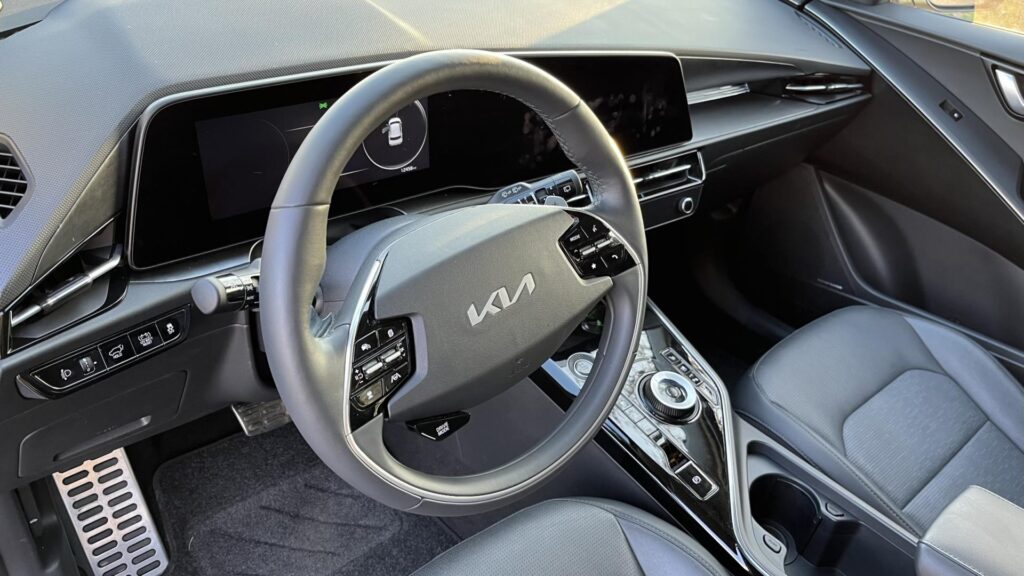
The vehicle deserves praise for its ample large storage compartments. You put your cell phone straight on the wireless charging area and the rest in the large compartment in the middle. Integrated into it are “ejector” cup holders. It’s just a shame that the armrest can’t be adjusted or moved forward in any way, only flipped out for access to another bulky compartment. There’s no shortage of USB connector variations, or the classic 12V socket, or a 230V adapter socket at the rear.

Premium trim brings comfort seats with power controls, including two memory buttons. They are automatically equipped with both ventilation and heating. As mentioned, the rear seats are also heated. In addition, rear passengers have separate USB ports for charging accessories and legroom comparable to vehicles at least a segment larger. The boot has a capacity of 425 to 451 litres, with a slightly higher load lip, but that won’t worry most owners. Also of interest is the design of the hard-mesh-shaped plate made of recycled materials, which can be easily “folded” into smaller ones and stored underneath the double bottom.
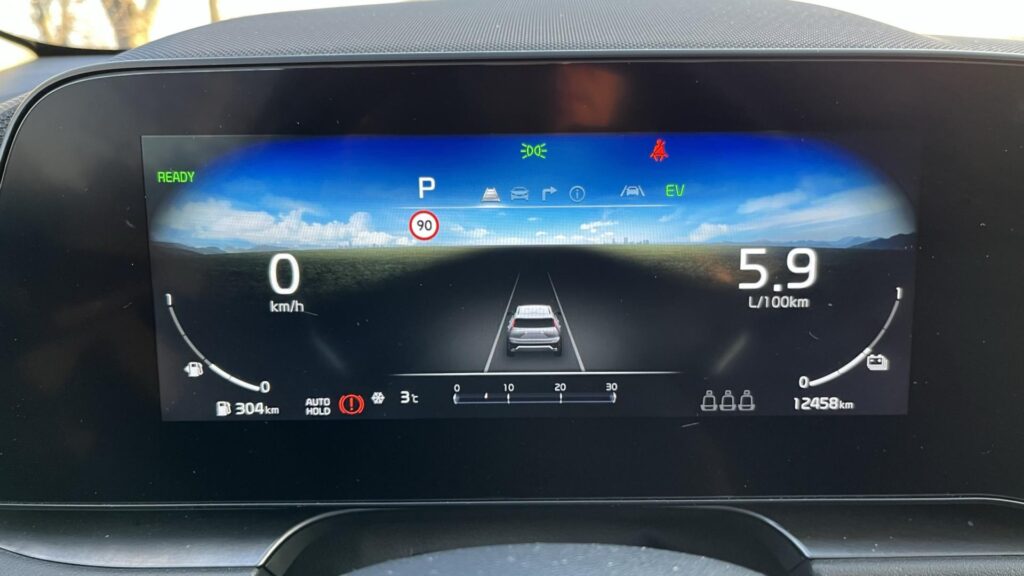
A high standard of safety is already provided by the basic equipment, which includes active lane departure warning, anti-collision assist and speed limit indicator. The Premium trim then lets all the elements of autonomous driving shine through. Advanced adaptive cruise control, along with highway driving assist, keeps the car in its lane and actively slows it down depending on the speed limit. Steering and deceleration inputs are quite responsive, while acceleration at the end of the limit is quite dynamic. Overall, the system is very well tuned and gives the driver a feeling of confidence that they can actually leave some of the work to the vehicle. The colour head-up display contributes to a perfect overview of the situation, which in addition to the speed shows the nearest turns on the route, activated assistants, traffic signs and restrictions, but also takes over the warning of vehicles in a blind spot and illuminates warning graphics right in front of your eyes.

The Niro is important to the KIA carmaker because it is the only model in the entire range to have up to three powertrain options. In the hybrid we tested, which is referred to as HEV, the base is an atmospheric petrol four-cylinder 1.6 GDI with 77 kW of power and 144 Nm of torque. It is assisted by a 32 kW (170 Nm) electric motor drawing power from a 1.32 kWh LiPol battery. The plug-in hybrid is based on the same concept, but has an understandably more powerful electric motor (62 kW and 203 Nm) and a larger battery (11.1 kWh), with which it can travel between 76 and 84 km in pure electric mode.

It’s hard to determine how much the hybrid we tested runs on battery power alone, because the computer manages everything. However, it is no problem to drive shorter distances or smaller villages purely on electric power. Electricity isn’t just a minor help here, then, and without a drop of petrol, the hybrid Niro can even go down the motorway at 120km/h. However, the hybrid, with a total output of 104 kW and 265 Nm, is slightly slower overall compared to other powertrain versions and more for the quiet driver. It hits 60 mph in 10.8 seconds and reaches a top speed of 162 km/h. With the smaller wheels on, the figures are even friendlier…
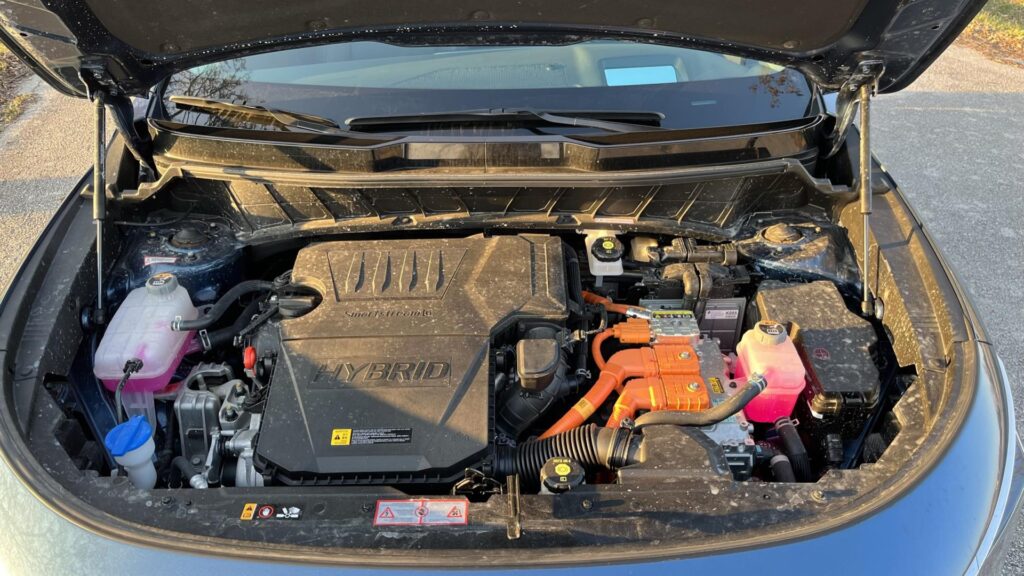
The operation of the system itself shows that KIA has a lot of experience with hybrids. The car’s acceleration is smooth and quiet, the response to accelerator depression is immediate and the combustion engine engagement is seamless. Recall that the powertrain cooperates with a six-speed DCT dual-clutch transmission and sends power solely to the front wheels. This cooperation is unqualified, the gearbox shifts logically and doesn’t get unnecessarily confused either. Only the revved combustion engine sends a more noticeable noise into the cabin, but it’s nothing dramatic.
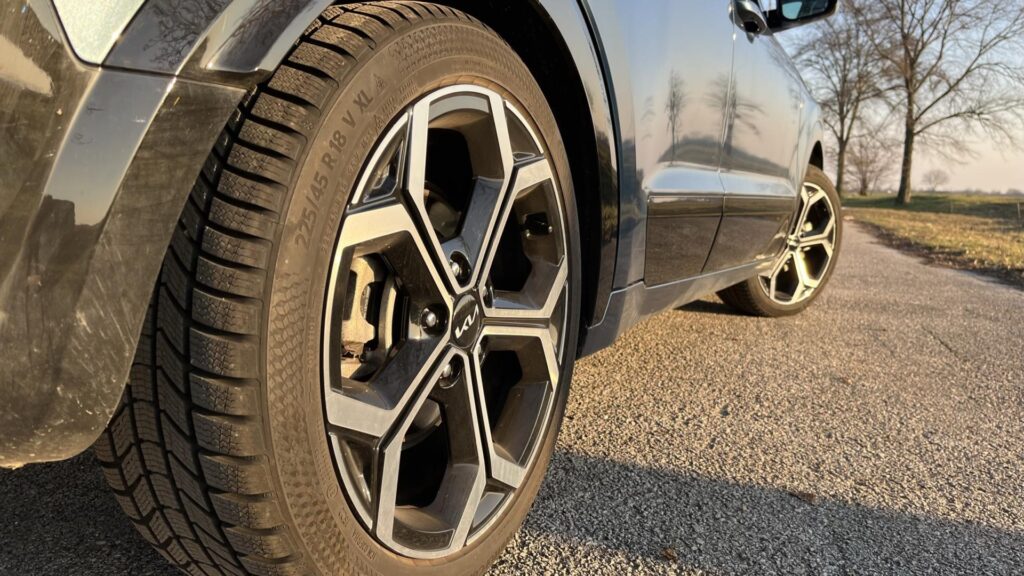
The result is a pleasant driving experience on the highway, county roads and especially in the city. Bumps and poorer quality tarmac are handled with confident composure by the Niro. It behaves neutrally in corners, and you can feel the electronics struggling to keep the car on the inside of the turn as you go around a sharper corner. On a related note, the Niro deserves praise for how well the chassis works with weight and suppresses side roll. In Sport mode, the steering stiffens noticeably and the throttle response sharpens, which is down to the greater involvement of the electric motor. Most of the time, though, you’ll still leave everything in ECO mode because it’s just so well set up. The level of engagement of the electric motor is constantly changing according to the environment and driving style. On the motorway at a steady 130mph, therefore, the engine revs between 2,500 and 3,000rpm, and as the Niro is generally very well soundproofed, you’ll usually go faster than you think.

During the test week, when the roads were mostly motorways and city, the consumption settled at a flat 5.9l/100km. In the district, it’s no problem to get close to the five-litre mark, and on smaller routes in the city, with the engine warmed up, the Niro can claim as little as 4l/100km. The brakes aren’t overpowered and both the regenerative and braking phases can be precisely controlled. You can adjust the recuperation with the levers under the steering wheel. The pad minus adjusts three levels sequentially and holding it down takes you up to the maximum with a full stop function. In Sport mode, the levers “switch” to the automatic gearshift. You can see here that someone has been thinking…

And the technical thinking continues on the chassis. KIA says the proportion of high-strength steel has risen to 22%, giving the entire skeleton greater torsional rigidity despite a weight reduction of more than 20 kilograms. We’ve got conventional McPherson axles up front and a four-link design at the rear. The result is a pleasant and comfortable ride in virtually all circumstances. The shod eighteen-wheelers don’t struggle significantly with the rigours of our roads either. Over most of them the chassis carries itself gracefully, even on a series of bumps in a corner it has no tendency to buckle, the car is legible and the track holds very surely.

The control itself is nice, but don’t expect too much feedback from it. It does stiffen noticeably in sport mode but nothing more happens. Its charm lies primarily in its precision and readability, plus its tuning is very pleasant in city driving and parking. The brisker pace does betray some of that extra weight, but the body doesn’t lean much and the car benefits from improved stiffness in its ride.
The tested Niro in Platinum trim starts at a price tag of €36190. Add to that the extras for metallic paint, C-pillar paintwork and the technology pack and you’re looking at a figure approaching €39k. However, the base version is available from €27590 and the superbly equipped mid-range Gold trim for a respectable €31290.
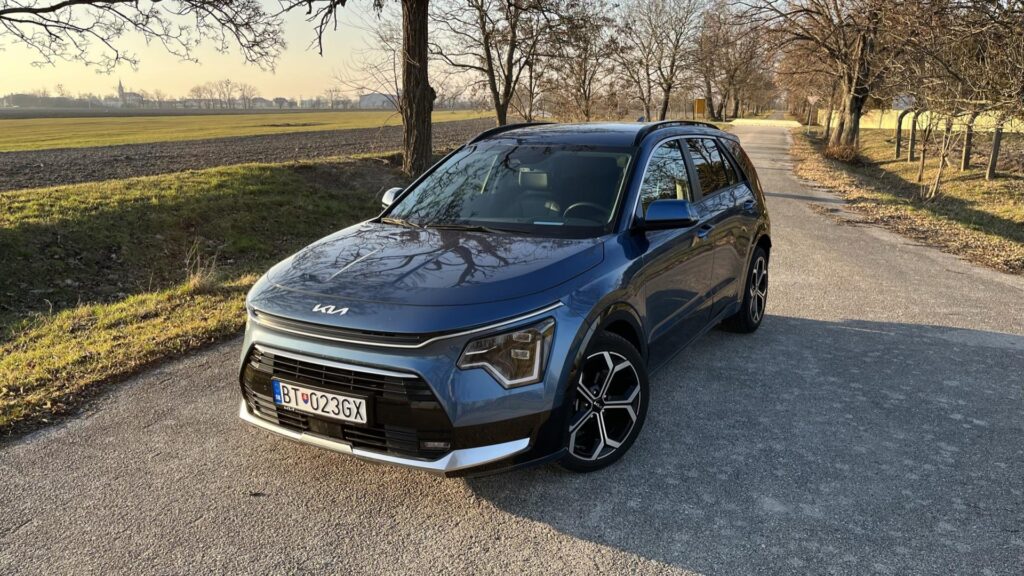
In its second generation, the Niro is indeed a hearty car. The extravagant looks may not suit everyone, but the cabin full of modern technology and unprecedentedly large portions of space certainly does. The hybrid itself may not be the quickest on the road, but its tuning deserves huge praise. Ditto the fuel consumption, which stays sympathetically low, especially in the city and on the highways. Add in solid driveability, a decent price tag for the two lower trim levels and you’ve got a car that certainly shouldn’t be lost from your crosshairs when choosing in this category…


